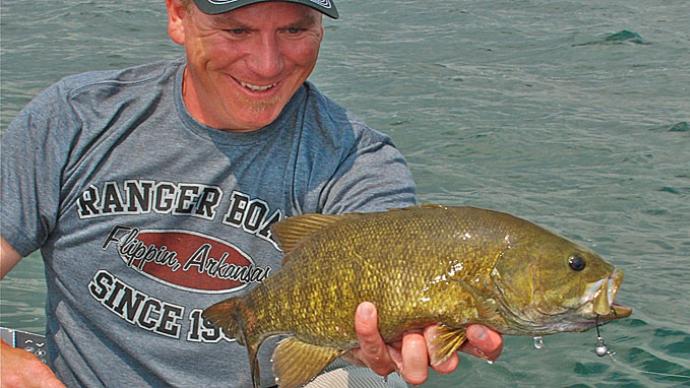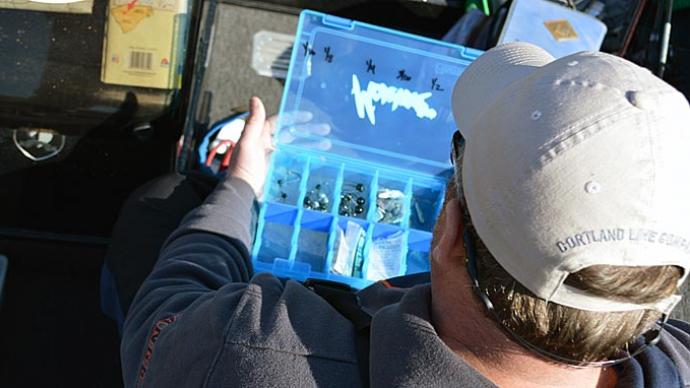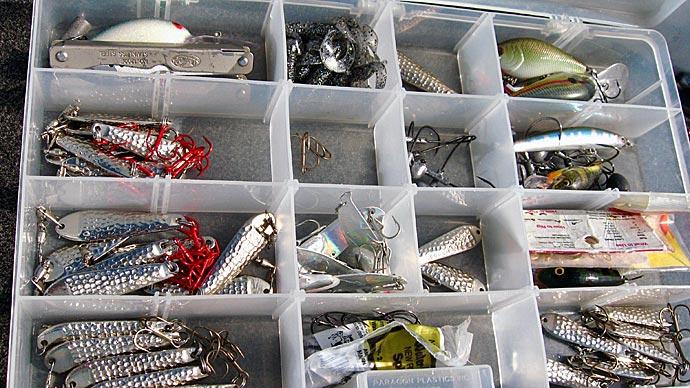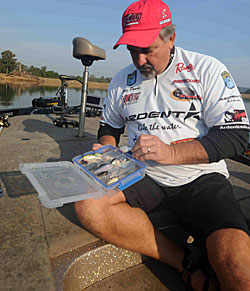
The search is a little annoying at first and becomes downright frustrating as the minutes mount.
Looking for that particular bag of soft plastics in a disorganized boat can be time-consuming and frustrating for the novice angler.
“Tackle organization is one of the major things and a critical difference between the everyday angler and the professional because it helps with your decision making,” says Mississippi pro Pete Ponds. “Your mind is not cluttered because you know where everything is.”
Although Ponds confesses he sometimes fails to practice it, he always believes in the axiom “a place for everything and everything in its place.” Years of experience on the Bassmaster Elite Series, FLW Tour, and Major League Fishing trails have taught Ponds the importance of keeping his tackle organized in his boat. “When you can’t find something, then you spend a lot of time digging for it, but if you know where it’s at, that helps,” he says.
The touring pro believes when he looks in his well-organized storage compartment, he might see something that gives him an idea to change lures if the fish have stopped biting. He also believes decisions like that have a “great impact” on his outcome in a tournament.
The Major League Fishing (MLF) format is especially challenging for Ponds because he has to fish from a boat provided by MLF. “Tackle organization is everything then because you just don’t have the room in a strange boat that you would in your own,” he says.
Since Ponds has to travel throughout the country to compete, he tries to stock his boat with lures that work best on a particular fishery rather than carrying a boatload of baits. “So I have a few Plano boxes that I have organized for clear-water situations and another for muddy water,” Pond says. He also has boxes for Florida lakes, Northern lakes, and other waters throughout the country. The Mississippi pro estimates he spends about eight to 10 hours organizing his boat in preparation for a tournament.
Ponds suggests that anglers who fish their home lakes always should stock their boats according to the seasons. So they should have lure boxes and bags set up for spring, summer, winter, and fall rather than carrying their whole arsenal of lures in the boat.
“We all have a habit of overloading our high-performance boats,” Ponds says. “So how you have your tackle stored in your boat has a lot to do with how it functions.”
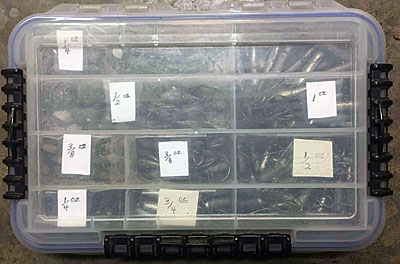
The tournament veteran tries to distribute weight evenly in the boat to improve the boat’s performance. He stores lighter stuff such as rain gear and life jackets in the starboard front compartment and stows his rods in the port side rod locker. He believes a boat performs better with heavier weight distributed towards the rear, so he stores his soft plastic bags on the port side rear compartment to counterbalance the weight of the driver. “You would be surprised how much soft plastics weigh when you get a bunch of them in there,” he says. Essentials such as an extra bilge pump, extra aerator pump, spare prop, and spare tools are kept in the rear compartment behind the driver’s seat.
While on the tournament trail, Ponds keeps most of his lure boxes in the truck and downsizes the lures he will need into a “to go” box for fishing that day. “I will have everything I think I will need in that little bitty box,” Ponds says. The box might contain one package of Yum Christie Craws, one Bandit crankbait, and a few other assorted lures and soft plastics bags he guesses will work that day. He keeps all his terminal tackle, such as worm weights, hooks, swivels, etc., in a small waterproof Plano box. His dipping dyes are kept in Ziploc bags and placed in a soft side tool bag, which helps prevent spillage of the dyes in his boat.
“Limiting your tackle is so important,” Ponds says. He manages his tackle by making it a goal for each trip on the water to fish out of his “to go” box, so he never has to rummage through a bunch of boxes in his boat. Ponds ensures he puts all his gear back in its proper place and restocks his “to go” box with replacement lures or different baits he thinks might work the next day.
Ponds also relies on a tackle management system to keep track of all his lures when he is home. He has Plano boxes dedicated to various types and sizes of crankbaits, such as separate boxes for Bandit 100 Series, 200 Series, and 300 Series crankbaits. He also separates his soft plastics by particular types (worms, lizards, craws, etc.) and places the packages into Ziploc bags that he labels and packs into tote boxes.
If you want to avoid the frustration and time-consuming search for lures in an overloaded boat, try a “to go” box on your next fishing trip.


